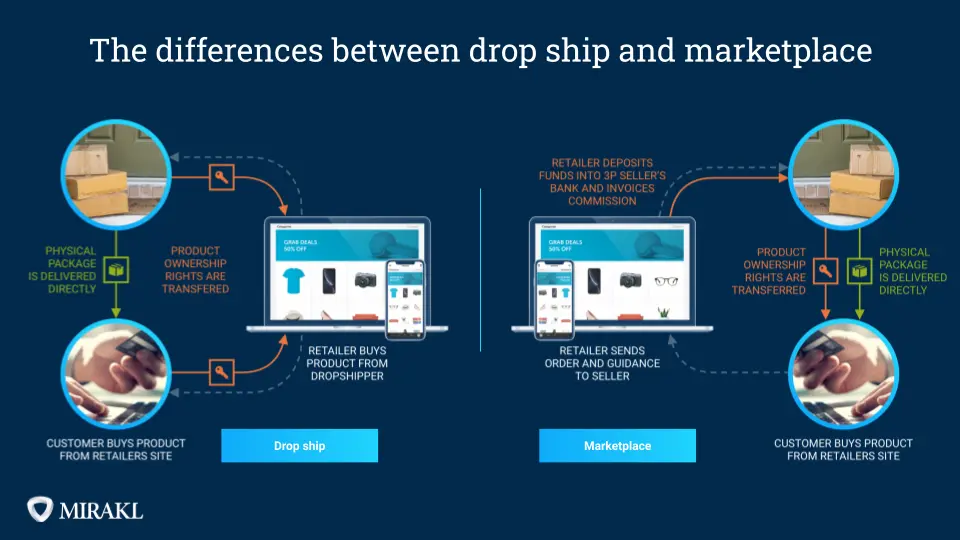Non c’è bisogno di dire che l’e-commerce è diventato fondamentare sia per i brand che per i retailer nei settori moda, farmaceutico, fai da te e altri. Ci sono però diversi modelli operativi per vendere online, il sito diretto (B2C), i marketplace, il dropship e l’affiliate.
Il rapporto tra rivenditori e marchi è cambiato. I rivenditori non effettuano gli ordini wholesale come una volta, ma stanno integrando diversi modelli di business tra cui dropshipping, marketplace e e-concession.
e-concession
E’ la formula delle e-concession a rispondere alle esigenze di crescita dei brand. Questi accordi permettono alle griffe di aggredire più velocemente nuovi mercati e di avere un controllo più elevato rispetto al wholesale, in primis in tema di gestione dei prezzi e di politiche di sconto
Nelle e-concession – ha precisato Giacomo Antonelli, e-commerce advisor di 143 Consulting – il brand generalmente lascia i capi ‘in conto vendita’ e il negoziante (colossi online-only come Net-a-porter o Matchesfashion) trattiene una commissione (dal 20% al 30%) sul valore totale del venduto”.
Hanno molte opzioni per interagire con i marchi, inclusi dropship e mercati curati. Basta guardare al fatto che nel 2021 Macy’s, Nordstrom e Foot Locker hanno tutti annunciato piani per investire in operazioni di dropshipping per ridurre la loro dipendenza dall’inventario all’ingrosso.
Farfetch
Farfetch è un marketplace che offre ai brand anche la possibilità di esternalizzare la logistica B2C, in altre parole Farfetch può gestire lo stock e le operazioni di pick pack and ship in cambio di una commissione sulle vendite dell’8%.
Monetizzazione: Farfetch monetizza la piattaforma dal lato dell’offerta addebitando ai marchi un totale del 25% sulla vendita di ciascun bene, con un ulteriore 8% se i rivenditori desiderano esternalizzare l’evasione degli ordini a Farfetch. Oltre il 70% delle entrate dell’azienda proviene dalle commissioni di vendita.
Il mercato: Farfetch è stata in grado di attrarre un forte segmento di clienti di giovani uomini e donne che spendono costantemente una dimensione media degli ordini di 550-650 USD.
Dropshipping is a fulfillment model that allows you to buy directly from suppliers and manufacturers who will ship the products directly to your customers.
Shopify
Il dropshipping è un modello di gestione degli ordini che ti permette di acquistare direttamente dal fornitore i prodotti da spedire ai tuoi clienti. Questo permette a te che vendi online di concentrarti sul marketing e sul customer service anziché lavorare sulla logistica e le spedizioni.
Con il dropshipping tu che sei il venditore al dettaglio “retailer” o “etailer” ricevi dal cliente finale il prezzo retail del prodotto che vendi, mentre paghi al tuo fornitore “drop shipper” che spedisce la merce il prezzo wholesale.
Differenze tra markeplace e dropshipping
Ma mentre i termini sono spesso usati come sinonimi, ci sono importanti distinzioni tra dropship e marketplace. In termini semplificati, le maggiori differenze tra drop ship e marketplace sono il seller of record o venditore (chi fattura) e chi stabilisce il prezzo: in un modello di drop ship, il commerciante è sia il seller of record che il decisore del prezzo, mentre nel modello marketplace il fornitore è il seller of record e fissa il prezzo.
Il marketplace
Nel modello marketplace, i venditori di terze parti vendono direttamente ai clienti finali tramite il sito di eCommerce esistente di un commerciante (merchant). Quando viene effettuata una vendita, mentre il commerciante facilita lo scambio, il fornitore e l’acquirente stipulano direttamente un accordo.
E’ utile notare che il pagamento può avvenire dal cliente al commerciante sia in maniera diretta, ad esempio su e-bay, che indiretta ad esempio Amazon.
How does retail arbitrage compare to other business models on Amazon?
- Private label is when you create your own product label/brand, generally by modifying an existing product in the market. For example, you can create a higher quality garlic press than one already selling on Amazon, reproduce it from a manufacturer, and add your logo to it. It’s the most common method of selling on Amazon and can be incredibly profitable, but most sellers need some capital to get started.
- Wholesale is when you buy products in bulk directly from a brand or from distributors with extra stock in order to sell on Amazon, and this also requires start-up money. This does not involve ordering products from retail stores. Wholesale is a more sustainable business model as you can replace orders every month and you are an authorized reseller, meaning you don’t have to worry so much about inauthentic claims.
- Dropshipping is when you buy products directly from a manufacturer who fulfills the order and ships directly to the customer.
What is dropshipping
https://www.mirakl.com/blog/what-is-the-difference-between-dropship-and-marketplace
What is drop shipping and how does it work?
Drop shipping is an eCommerce fulfillment method in which a business does not stock the products it sells at its warehouse. Instead, when the merchant sells the product, it makes a “just in time” purchase from its supplier, and the supplier ships the product directly to the customer.
With drop ship, the merchant never actually takes physical ownership of the goods, and it doesn’t have to purchase a product until it has already been sold to a customer. However, it is still the seller of record, which means it still controls the retail price and margin, promotions, and customer service. Drop ship offers more control over the portfolio while reducing working capital.
Drop ship is most commonly seen with product categories where the merchant wants to reduce the cost of managing inventory, especially for bulky items like furniture, that don’t fit the business’ existing fulfillment capabilities. It is also applied to those products for which procurement teams can negotiate deeper discounts by committing to a drop ship relationship versus marketplace.
